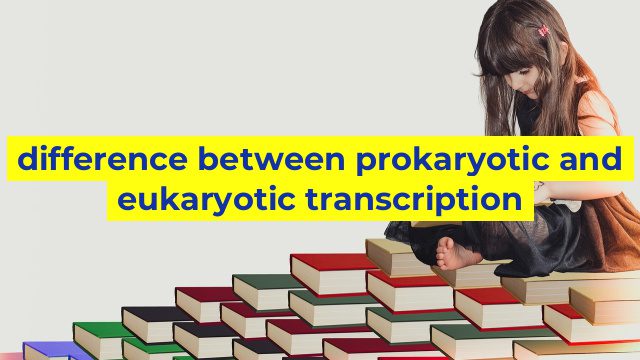Understanding the Difference between Prokaryotic and Eukaryotic Transcription
Transcription is a vital biological process that takes place within cells, where genetic information encoded in DNA is converted into RNA molecules. It is an essential step in gene expression, allowing an organism to produce the proteins necessary for various functions. However, transcription is a complex process that differs between prokaryotic and eukaryotic cells. In this article, we’ll examine the differences between prokaryotic and eukaryotic transcription.
What are Prokaryotes and Eukaryotes?
Before discussing transcription, it’s essential to understand the two categories of cells: prokaryotes and eukaryotes. Prokaryotes are unicellular organisms, such as bacteria and archaea, that lack a distinct nucleus, membrane-bound organelles, and other complex structures. On the other hand, eukaryotic cells, found in animals, plants, and fungi, contain a true nucleus and various organelles, including mitochondria and the endoplasmic reticulum.
Difference in Transcription between Prokaryotes and Eukaryotes:
The process of transcription is similar in prokaryotic and eukaryotic cells, but there are notable differences in the mechanisms and complexity involved.
Transcription Machinery:
In prokaryotes, RNA polymerase is the primary enzyme responsible for transcription. It binds to the DNA strand and synthesizes RNA in a 5′ to 3′ direction, using one of the DNA strands as a template. Eukaryotes, on the other hand, have several RNA polymerases, each transcribing a specific class of RNA. RNA polymerase II is the primary enzyme involved in transcribing mRNA, the molecule that ultimately gets translated into protein.
Gene Organization:
Prokaryotic genomes are typically small, often consisting of a single chromosome, which contains all the genetic information required for the organism to function. The genes are organized into operons, clusters of genes controlled by a single promoter, and transcribed as a single unit. Eukaryotic genomes, on the other hand, are more massive and complex, and the genes are generally spread out across multiple chromosomes. They are regulated by several transcription factors, enhancers, and silencers, which interact with the DNA sequences near the promoter to initiate or repress transcription.
RNA Processing:
In prokaryotes, newly synthesized RNA molecules can be immediately translated into protein. On the other hand, eukaryotic mRNAs undergo several modifications before they can be translated. One of them is the addition of a 5′ cap and 3′ poly(A) tail. The cap provides stability to the mRNA molecule and helps initiate translation, while the poly(A) tail protects it from degradation. Additionally, eukaryotic mRNAs undergo alternative splicing, where different exon combinations are used to generate multiple protein isoforms from a single gene.
Conclusion:
In summary, while the process of transcription is similar between prokaryotic and eukaryotic cells, there are significant differences in the mechanisms and complexity involved. Understanding these differences is essential to comprehend the fundamental processes that underlie gene expression in organisms.
Table difference between prokaryotic and eukaryotic transcription
| Factor | Prokaryotic Transcription | Eukaryotic Transcription |
|---|---|---|
| Nucleus | Lacks a defined nucleus | Has a defined nucleus |
| Genome | Single, circular chromosome | Multiple, linear chromosomes |
| Promoter | Located upstream of the gene | Located upstream of the gene |
| Transcription factors | Not required | Required |
| RNA polymerase | One type of RNA polymerase | Multiple types of RNA polymerase |
| Transcription initiation | Occurs quickly | Complex and slow |
| RNA processing | Minimal processing | Extensive processing including splicing, capping and polyadenylation |
| Location of transcription | Cytoplasm | Nucleus |


